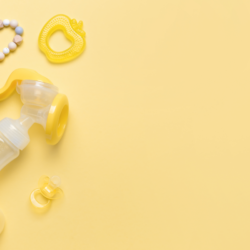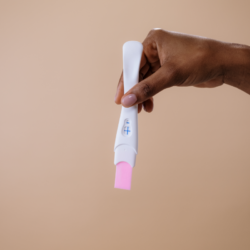How to choose a pregnancy test well? This is a very important question since the opening of the market for pregnancy tests on large surfaces, all pregnancy tests are not worth in terms of quality and reliability of the results you had an unprotected sexual relationship and you Worry? You wonder if you are pregnant… Whether it is responsible for enthusiasm or fear, this question that you are faced with deserves an unambiguous answer. A wide choice of urinary tests allows you to answer this question in all intimacy, provided that they are well used. Here are some essential precautions that your pharmacist can comment on. Don’t hesitate to question him.
Choice of pregnancy test in your pharmacy
-Different tests exist, but they are analog (result displayed as color or lines) or electronic (display in all letters: pregnant-not pregnant) They all look like a long pen composed of a wick protected by A cap, a reading window and a handle. -Choose the test that seems the easiest and most practical in terms of handling and interpretation. The approved tests are all 99% reliable.
How a pregnancy test works
To understand how pregnancy tests work, you have to do some mental gymnastics… In women, on average, the menstrual cycle lasts 28 days, which are counted from J-1 to J-28. So, from J-1 to J-7, those are the rules. Then, at J-14, it is ovulation: one of the two ovaries releases a mature oocyte into the fallopian tubes. For 24 hours (its lifespan), it can be fertilized by a sperm. If fertilization takes place at J-14, however, it is necessary to wait until J-20 for the embryo to cling to the walls of the uterus: it is the nesting. And it is precisely when the nesting process engages that is secreted HCG, or chorionic gonadotropin hormone. -This is why it makes known the presumed date of your next rules (see box on the back of the sheet). Depending on this date you can opt either for an early test (4 to 5 days before the date of the rules), or for a classic test to be performed on the 1st day of delay or better, between the 3rd and 4th day of delay of the rules. -Preferably perform the test in the morning at sunrise, as the concentration of pregnancy hormones is highest (less risk of false negatives). -During the day, avoid doing the test if you have been drinking abundantly in the hours that pre-cede (risk of distorting the result and obtaining a false negative caused by the dilution of ß hCG hormones in the urine). -Take the time (you do not do a pregnancy test during a “pee break”!) …
What type of pregnancy test to choose
To understand how to properly choose your pregnancy test in pharmacy, it is important to understand how these tests work. The procedure is the same for all, i.e. a urine stream on a part of the test in the form of a “pen” (which is easiest to use) or a urine deposit in a window on a “cassette”.
The technique used to detect pregnancy hormone called HCG is always the same. It is an immunological method based on an antigen-antibody reaction and will be expressed as a small coloured band (with a control strip that must always be present) or in the form of a digital display.
The tests available in pharmacies can then have different modes of reading, with colored strips, with crosses or with digital display. Color-coded tests are more sensitive and reliable than digital-display tests, although color-coded tests can sometimes be more difficult to read especially if the positive band is very slightly coloured. The pregnancy test with digital display also specifies the age of pregnancy in the number of weeks (1-2 weeks, 2-3 weeks or more than 3 weeks).
Interpretation of the test result
-Once the urine is deposited on the wick, an immunological reaction allows to highlight or not the presence of the hormone ß HCG specific of the pregnancy. -Wait for the reaction: once the wick is moistened, rest the cap and place the pen on a clean surface, making sure to put the Reading window on top. -Read the result: The result is displayed within 3 to 4 minutes. Depending on the chosen test you can read the result in different ways: The test is positive: you are probably pregnant. Consult your doctor to prescribe a confirmation blood test. More sensitive, it can tell you an estimate of the date of your pregnancy. The test is negative and you followed the procedure scrupulously: you are probably not pregnant but can confirm this result by reproducing the test if this confirmation reassures you. The test is negative but you have doubts or you have done an early test: the risks of false negatives being possible, the prudence commands to redo a test of control. In any case, do not hesitate to seek advice from your pharmacist or your attending physician.
Regardless of whether you plan to continue the pregnancy or not, it is imperative after carrying out a positive pregnancy test to contact your doctor to benefit from a suitable management.
In conclusion, carry out in all cases its pregnancy test:
- -19 days after an unprotected report.
- -From the first day of delay of the rules.
- -On the morning urine much more concentrated in hormone to avoid the risk of a false negative result.
- -A second Test must be redone 48 hours after the first, regardless of the result of the first, to validate or not the result.
- -If a morning-after pill has been taken, make a pregnancy test 17 days after taking this contraceptive.
Sources
1-http://www.femmeactuelle.fr/enfant/grossesse/sante/comment-choisir-test-de-grossesse-35097 2-http://www.parents.fr/envie-de-bebe/tomber-enceinte/test-de-grossesse-60768 3-http://www.magicmaman.com/, Our-selection-of-tests-of-pregnancy, 377,3354886. asp 4-http://www.naissance-bebe.com/grossesse/les-tests-de-grossesse-sont-ils-fiables.html 5-https://www.co-parents.fr/blog/comment-choisir-son-test-de-grossesse/







